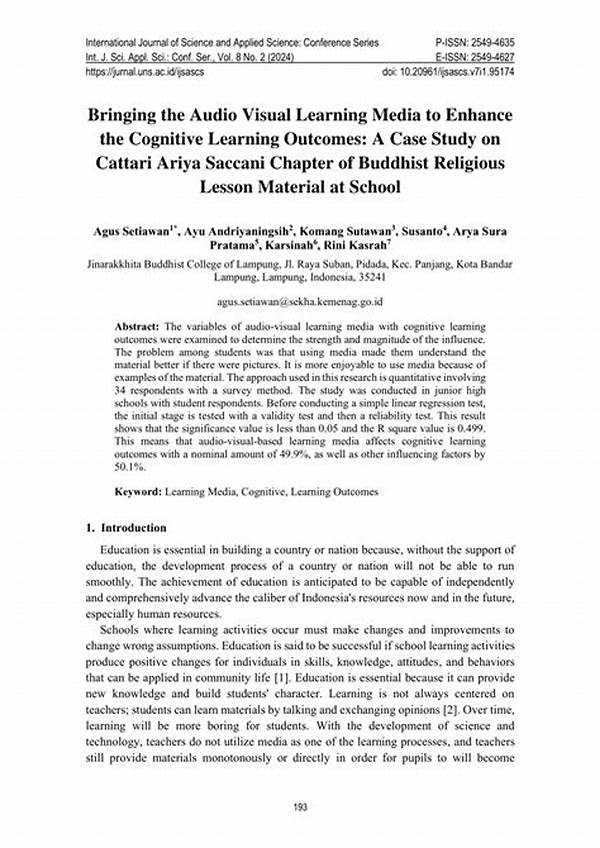In an era where digital technology reigns supreme, keeping young minds engaged during religious studies can be quite the challenge. However, there’s a beacon of hope shining through the murky waters of traditional learning—audio visual learning media. With its vibrant colors, immersive soundscapes, and dynamic narratives, it presents a fresh and engaging approach to exploring religious themes. Take this exciting journey with us as we delve into the future of religious education—an endeavor where spirituality meets technology, sparking both interest and the eagerness to learn.
Read More : Role Of Av In Interactive Museum Digital Experiences
But what makes audio visual learning media the standout choice? Why is it suddenly the talk of the town among educators who are constantly clamoring for more impactful teaching tools? The answer is beautifully simple: it speaks the language of youth. Today’s generation is practically born with a device in hand. They thrive in environments enriched with visual and audio stimuli. So, employing audio visual media in religious education isn’t just effective—it’s revolutionary.
The Benefits of Audio Visual Learning in Religious Education
The marriage between religion and audio visual learning opens up a wealth of benefits some might not expect from such a union.
Creating Rich and Immersive Experiences
Audio visual media taps into multiple senses through sight, sound, and sometimes even storytelling elements that evoke emotions. This fosters a richer learning environment where students can better grasp complex religious concepts and narratives. Imagine watching an animated depiction of historical religious events instead of merely reading about them. The scale, drama, and emotion are immediately more accessible.
Bridging the Gap Between Tradition and Modernity
Religion often involves venerable traditions, while young audiences favor modern interactive environments. Audio visual media forms a bridge between the two, connecting age-old teachings with modern techniques, ensuring the core messages maintain relevance.
Encouraging Active Participation
Traditional study methods often leave students in a passive role. Conversely, audio visual media can foster active engagement, prompting youth to interact with content, participate in discussions, and reflect on the material. This participatory model helps reinforce learning and encourages personal connection to the material.
How to Implement Audio Visual Learning Media in Religious Studies
Educators keen to make use of such media should consider the following to make religious studies come alive for their students.
Read More : Audio Visual History Sources Capturing The Spirit Of Twentieth Century Wars
Key Strategies for Effective Use of Audio Visual Tools
While the allure of technology is strong, the strategy behind using these tools is equally pivotal.
The Impact on Youth Engagement
It’s clear that when executed thoughtfully, the incorporation of audio visual learning media in religious studies can dramatically enhance youth engagement. Students who might typically zone out during lectures could find themselves captivated by the dynamic delivery and riveting content, retained through emotional and sensory experiences.
Real-Life Success Stories
Numerous educational institutions have already reported success stories of heightened interest and deeper understanding through incorporating such technologies in their religious curricula. These testimonials underline the incredible potential of this educational evolution.
Conclusion: Paving the Path Forward
To conclude, the use of audio visual learning media in religious studies represents more than just a modern educational trend—it’s a necessity for reaching and resonating with today’s youth. By meeting students in their digital world and using it as a platform to deliver timeless teachings, educators can ensure that the torch of spiritual education continues to burn brightly for future generations.
